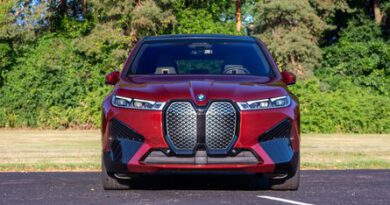Robotaxi Crashes: A look At Some Numbers From Cruise
When electric cars catch fire, they make the headlines. However, the fact that around 40 gasoline and diesel cars burn down every day in Germany alone – vehicles with these fuels are not colloquially called “combustion vehicles” for nothing – does not lure anyone out from behind the stove. What counts is the extraordinary, and that is the new, and much less frequently burning, electric cars.
At the moment, autonomous cars are in a similar situation when they are involved in an accident. For example, the focus of a crash in San Francisco was immediately on a robot cab when it ran over a woman. In this case, it had been a car driven by a human driver that hit the woman and flung her under the robot cab driving alongside. The fact that the guilty human driver then committed a hit-and-run was generously ignored. There were no appeals or instructions from the authorities that from now on only half of the human drivers are allowed to drive in San Francisco, or even that all driving by human drivers is banned until the accident process has been reconstructed exactly. We only get this idea if one of the newfangled robot cabs is involved.
It helps to take a closer look at the figures for accidents involving robot cabs. Swiss Re recently presented such an analysis and came to a clear conclusion: based on the available data, Waymo’s robot cabs are already 75 percent safer than human drivers. And that’s just the beginning of the technology.
Now Cruise has also presented an analysis that compared two studies from the University of Michigan and Virginia Tech’s data with that of the U.S. National Highway Traffic Safety Administration (NHTSA) and that of Cruise. It looked at driving data collected over a two-year period from 2016 to 2018 in San Francisco from human drivers of Uber and Lyft, as well as cabs. Only trips taken on roads with speeds up to a maximum of 35 miles per hour (56 km/h) were used.
This included an average of one accident for every 30,828.8 miles(49,326 kilometers), or 32.45 accidents per million miles (20.28 accidents per million kilometers). Injuries occurred at every 85,027 miles (136,043 kilometers) per accident, or 11.76 accidents per million miles (7.35 per million kilometers).
Compared to the first driverless million miles (1.6 million kilometers) of cruise robotaxis, they come in 65 percent fewer collisions than human drivers. In fact, they are 94 percent less at fault for collisions than human drivers. Injuries are also less frequent with robotaxis, at 74 percent.
These are very promising numbers considering the technology is only in its infancy. The analyses for both Waymo and Cruise make us optimistic that robotaxis will be able to prevent more than 90 percent of all collisions. Such numbers require a response from lawmakers: and that can only be that driving cars by human drivers should be banned.
KREATIVE INTELLIGENZ
Über ChatGPT hat man viel gelesen in der letzten Zeit: die künstliche Intelligenz, die ganze Bücher schreiben kann und der bereits jetzt unterstellt wird, Legionen von Autoren, Textern und Übersetzern arbeitslos zu machen. Und ChatGPT ist nicht allein, die KI-Familie wächst beständig. So malt DALL-E Bilder, Face Generator simuliert Gesichter und MusicLM komponiert Musik. Was erleben wir da? Das Ende der Zivilisation oder den Beginn von etwas völlig Neuem? Zukunftsforscher Dr. Mario Herger ordnet die neuesten Entwicklungen aus dem Silicon Valley ein und zeigt auf, welche teils bahnbrechenden Veränderungen unmittelbar vor der Tür stehen.
This article was also published in German.


